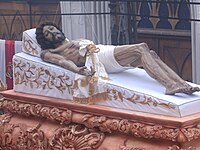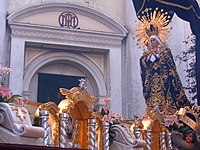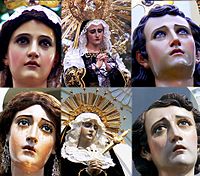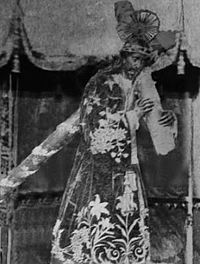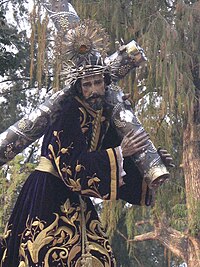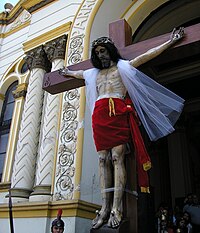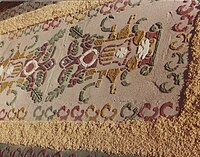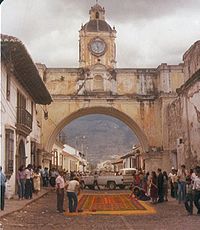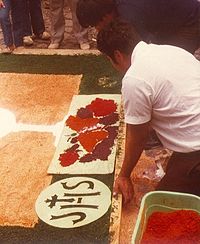
Antigua Guatemala, commonly known as Antigua or La Antigua, is a city in the central highlands of Guatemala. The city was the capital of the Captaincy General of Guatemala from 1543 through 1773, with much of its Baroque-influenced architecture and layout dating from that period. These characteristics had it designated as a UNESCO World Heritage Site in 1979. Antigua Guatemala serves as the capital of the homonymous municipality and the Sacatepéquez Department.

Esquipulas, officially Municipality of Esquipulas, whose original name was Yzquipulas, is a town, with a population of 18,667, and a municipality located in the department of Chiquimula, in eastern Guatemala. Esquipulas' main attraction is the beautiful Black Christ located in the Basilica of Esquipulas, making the town an important place of Catholic pilgrimage for Central America. It is also one of the most important towns of the country and one that has had the most economic and cultural growth.
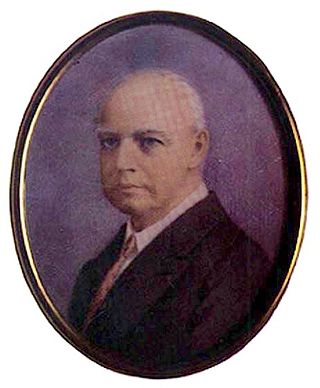
Pedro de Aycinena y Piñol was a conservative politician and member of the Aycinena clan that worked closely with the conservative regime of Rafael Carrera. He was interim president of Guatemala in 1865 after the death of president for life, general Rafael Carrera.
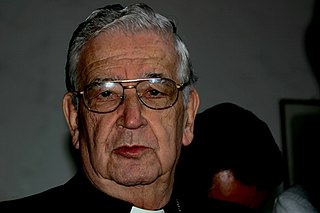
Rodolfo Ignacio Quezada Toruño was a Guatemalan cardinal of the Catholic Church. He was Archbishop of Guatemala City, having previously served as Bishop of Zacapa y Santo Cristo de Esquipulas from 1980 to 2001. He was elevated to the cardinalate in 2003.
Santa Cruz El Chol is a municipality in the Baja Verapaz department of Guatemala. It is situated at 1008 m above sea level and contains about 8817 people. It covers a terrain of 140 km² and its annual festival is held from December 6-December 8.

Mataquescuintla is a town and municipality in the Jalapa department of south-east Guatemala. It covers 262 square kilometres (101 sq mi).

The Universidad de San Carlos de Guatemala is the largest and oldest university of Guatemala; it is also the fourth founded in the Americas. Established in the Kingdom of Guatemala during the Spanish colony, it was the only university in Guatemala until 1954, although it continues to hold distinction as the only public university in the entire country.

The Spanish Catholic Church, or Catholic Church in Spain, is part of the Catholic Church under the spiritual leadership of the Pope in Rome, and the Spanish Episcopal Conference.

The Archdiocese of Santiago de Guatemala is a Latin Church ecclesiastical territory or archdiocese of the Catholic Church in Guatemala. It is a primatial metropolitan see with six suffragan dioceses in its ecclesiastical province.
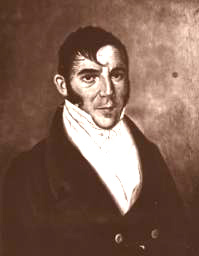
José Felipe Mariano Gálvez was a jurist and Liberal politician in Guatemala. For two consecutive terms from August 28, 1831, to March 3, 1838, he was chief of state of the State of Guatemala, within the Federal Republic of Central America. In 1836, he was elected a member of the American Philosophical Society.

Guatemala, officially the Republic of Guatemala, is a country in Central America. It is bordered to the north and west by Mexico, to the northeast by Belize, to the east by Honduras, and to the southeast by El Salvador. It is hydrologically bordered to the south by the Pacific Ocean and to the northeast by the Gulf of Honduras.
The Territorial Prelature of Santo Cristo de Esquípulas is a Roman Catholic territorial prelature located in the city of Esquipulas, Chiquimula in Guatemala.

Mariano Rivera Paz was Head of State of Guatemala and its first president.
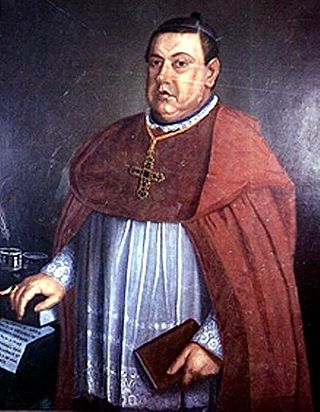
Juan José de Aycinena y Piñol was an ecclesiastical and intellectual conservative in Central America. He was President of the Pontifical University of San Carlos Borromeo from 1825 to 1829 and then of the Universidad Nacional from 1840 to 1865. He was a thinker criticized by liberal historians for his strong relationship with the conservative government of General Rafael Carrera and for eliminating the possibility of getting the Central American Union which the Liberals wanted. His participation in the government has been assessed more objectively in research conducted between 1980 and 2010. He was heir in 1814 to the noble title of III Marquess of Aycinena, and bishop in partibus of Trajanopolis from 1859. He had a taste for law, oratorical talent and wrote over twenty works.

Sawdust carpets are one or more layers of colored sawdust, and sometimes other additional materials, laid on the ground as decoration. Sawdust carpets are traditionally created to greet a religious procession that walks over them. The tradition of decorating streets in this fashion began in Europe and was brought to the Americas by the Spanish. The tradition is still found in Mexico, Central America, parts of South America and parts of the United States, but it is strongest in Mexico and Central America.

The Concordat of 1854 was an international treaty between the president of the Republic of Guatemala - General Captain Rafael Carrera - and the Holy See, which was signed in 1852 and ratified by both parties in 1854. Through this, Guatemala gave the education of Guatemalan people to regular orders Catholic Church, committed to respect ecclesiastical property and monasteries, imposed mandatory tithing and allowed the bishops to censor what was published in the country; in return, Guatemala received dispensations for the members of the army, allowed those who had acquired the properties that the Liberals had expropriated the Church in 1829 to keep those properties, perceived taxes generated by the properties of the Church, and had the right to judge certain crimes committed by clergy under Guatemalan law. The concordat was designed by Juan José de Aycinena y Piñol and reestablished the relationship between Church and State in Guatemala. It was in force until the fall of the conservative government of Marshal Vicente Cerna y Cerna

Mariano de Aycinena y Piñol was wealthy and influential Guatemalan merchant family and an important conservative politician. A younger son of the first marquis of Aycinena, peninsular-born Juan Fermín de Aycinena (1729-1796), Mariano was a leader of Guatemalan independence from Spain. He served governor of the State of Guatemala in the Central American Federation from 1 March 1827 to 12 April 1829 and patriarch of the Aycinena family. The family had the commercial monopoly in Central American during the Spanish colonial era later year thanks to the Consulado de Comercio. He was one of the signatories of Central American independence and lobbied heavily for the annexation of Central America to the Mexican Empire of Agustín de Iturbide. This arrangement would keep the family's economic position and privileges following independence. After being expelled along with the Aycinena family in 1829 after being defeated by Francisco Morazán, went into exile in the United States and then to Mexico. He came back to Guatemala after the conservatives had allied with general Rafael Carrera; but then he retired from public life and hand the Aycinena family leadership to Juan José de Aycinena y Piñol.

The Church and convent of the Society of Jesus in Antigua Guatemala is a religious complex that was built between 1690 and 1698. It was built on a block that is only 325 yards (300 m) away from the Cathedral of Saint James on a lot that once belonged to the family of famous chronicler Bernal Díaz del Castillo and had three monastery wings and a church. There were only a maximum of 13 Jesuit priest at any given time in the building, but they also hosted Jesuit brothers and secular students. In the building was the San Lucas School of the Society of Jesus, until the Jesuits were expelled from the Spanish colonies in 1767.

The Basilica of Esquipulas or Cathedral Basilica of the Black Christ of Esquipulas is a Baroque church in the city of Esquipulas, Guatemala, named after the image of the Black Christ of Esquipulas which it houses. It is the largest Roman Catholic church in Central America and southern Mexico and the only one in America with four bell-towers. It has the status of cathedral, minor basilica and Catholic sanctuary.

Mariano Rossell y Arellano was a Guatemalan Roman Catholic clergyman. He was the fifteenth archbishop of Guatemala from 1939 to 1964 and the first Prelate Nullius of Esquipulas. He played a decisive role during the rule of colonel Jacobo Arbenz (1951–1954), accusing it of communism and atheism in sermons and services. After Arbenz's overthrow, he managed to retain the church's right to own property and to run schools, as well as setting up the Jesuit-run Rafael Landivar University and gaining the promotion of the prelature's main church to minor basilica status.







